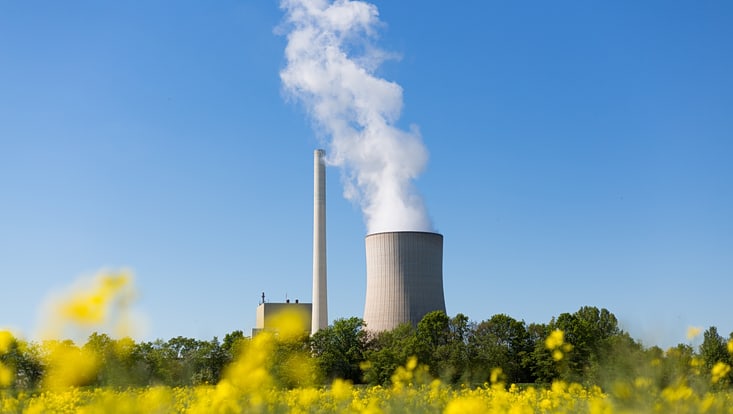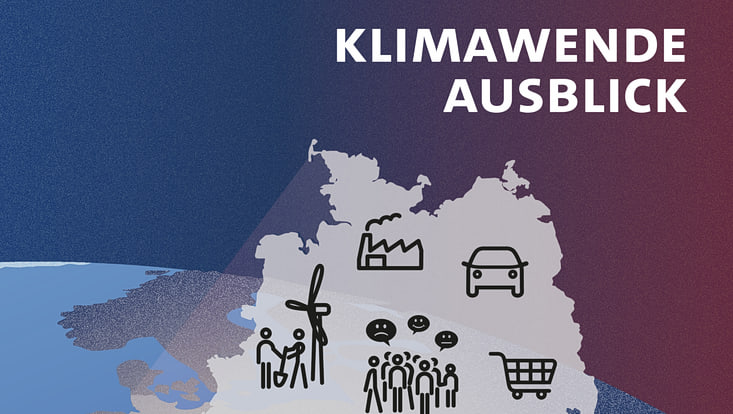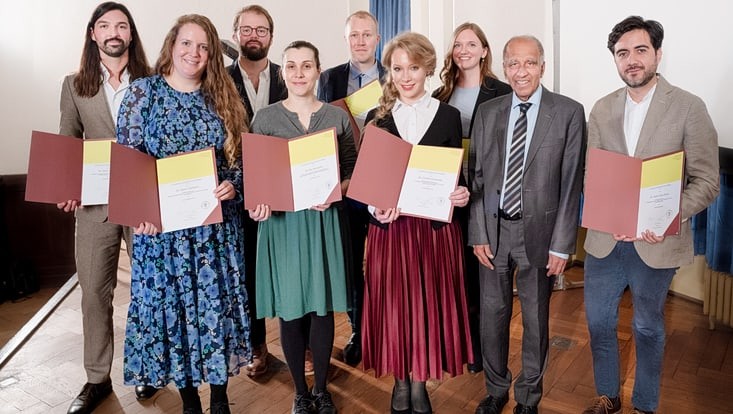and Society (CLICCS)
New study on EU emissions tradingHow much will the coal phase-out actually help the climate?
17 April 2025, by Thomas Merten

Photo: : Christian Schwier/Adobe Stock
Germany is committed to phase out coal-fired power plants by 2038, but the actual climate effect of this policy is debated. A new study from the University of Hamburg’s Cluster of Excellence CLICCS offers surprising insights into such unilateral national approaches. The experts investigated how overlapping climate policies – that is, measures taken by individual countries to supplement broader regulatory approaches like the EU’s Emissions Trading System (ETS) – affect total emissions. The study shows what the coal phase-out has actually achieved – and how supplemental climate protection measures could become truly effective.
“Some national climate protection measures don’t reach their full potential because they’re not harmonized with the ETS,” explains study author Prof. Grischa Perino, who also authored the expert assessment of the coal phase-out for the Federal Ministry for Economic Affairs and Climate Action (BMWK). The ETS defines the total volume of emission allowances, which are used to limit CO2 emissions. Companies can purchase and trade these allowances with one another. Every year, the volume of allowances is reduced, the goal being to reduce overall emissions in keeping with the EU’s climate targets.
At the same time, climate protection measures like Germany’s coal phase-out have been ratified – a phenomenon that experts refer to as “overlapping climate policies.” Part of what made the country’s “traffic light” coalition collapse was the inability to find consensus on whether or not such supplemental measures to the ETS are truly effective; the FDP’s position was that no supplemental measures were needed. And that’s true, to a certain extent: “We have to pay careful attention to ensure that those emissions reduced at the national level aren’t simply released somewhere else,” says Perino, a climate economist.
Perino and his colleagues examine the problem using examples from around the globe, including Germany’s coal phase-out, which they determined has had a positive but limited effect: “Given the legal leeway available, the federal government made the most of the law. When viewed together with the changes approved at the EU level in 2023, we can currently assume that the German coal phase-out does contribute to climate protection,” Perino explains.
Leaks in the system
In Germany, the phase-out is slated for completion by 2038. But there are two fundamental problems with this approach: although shutting down coal-fired power plants in Germany reduces “dirty” energy production within our borders, since electricity is traded on a networked European market, other countries that still use coal-fired plants can step in to fill the gap. When that happens, then even without the ETS, the actual climate effect is less than that observed in Germany – a problem the researchers refer to as an “internal carbon leakage.”
In the worst-case scenario, the other power plants are less efficient or use dirtier fuels; then the emissions could actually even rise. For the year 2020, the authors estimated the leak rate at ca. 55 percent. In other words, for every metric ton of CO2 that Germany saved that year, more than half was nullified by additional emissions in other countries.
The waterbed effect
The second problem lies in the ETS: the EU’s emissions trading system essentially caps the overall emissions for e.g. the energy and industrial sectors. When the demand for emission allowances is reduced in countries like Germany through coal phase-outs, the price for these allowances drops. This in turn can lead companies in other sectors or countries to increase emissions, because polluting is now less expensive for them.
In the past, this “waterbed effect” has meant that measures pursued by individual countries were often completely ineffectual. “It’s like a waterbed: when you push down on one part of it, another part rises in response,” says Prof. Grischa Perino. With the introduction of the Market Stability Reserve (MSR) in EU emissions trading this negative effect has been removed for the time being. To continue the waterbed analogy, the MSR is like a pressure-release valve, since it automatically removes any surplus emission allowances from the market. But the MSR will expire in the foreseeable future, after which we’ll see the waterbed effect again.
To ensure that supplemental climate protection measures actually help reduce overall emissions, we would need to reduce the corresponding amount of “water” from the waterbed, i.e., to remove the surplus emission allowances once they are no longer automatically removed by the MSR – the pressure-release valve for the ETS. To date, the coal phase-out is the only climate protection measure that calls for doing so, sensibly complementing the effects of the MSR. Accordingly, Grischa Perino concludes that it’s “…highly probable that the CO2 emissions reductions achieved since 2021 through Germany’s coal phase-out have induced a corresponding reduction in overall emissions in the EU.”
How long the Market Stability Reserve will continue to automatically remove surplus emissions from the market will depend on how the market develops and on whether the current regulations on EU emissions trading remain in effect. Further, it remains to be seen whether the federal government adheres to its own plan to independently remove the requisite emission allowances and not reap the financial benefits of auctioning them. These factors will be critical in determining whether the German coal phase-out continues to have a meaningful positive effect on climate protection in the future.
How climate protection can be most effective
The study also shows how climate policies that overlap with the ETS can be most effective: measures like promoting renewable energies are more effective than measures that address polluters directly. When e.g. Germany makes massive investments in wind and solar energy, it reduces electricity prices, which can also reduce demand for dirty electricity from coal and gas in neighboring countries.
Grischa Perino and his colleagues call for better coordination on climate policy between the national and European level, and a reliable emissions trading system. Further measures should offer incentives for investing in cleaner alternatives and include social compensation for citizens.
Problems in the ETS also impact private climate protection: a reliable way how citizens can protect the climate is to target areas not covered by the ETS – like eating less meat. Currently, it’s still helpful to reduce car travel, electricity consumption, and heating. But this will change in the next two to three years, as the MSR will expire and the ETS 2, which applies to the heating and transportation sectors and will go into effect in 2027, is expected to suffer from the waterbed effect as well.
“These arguments are used – sometimes correctly, sometimes incorrectly – to torpedo certain measures,” says Perino. Recent examples include the controversial paper from Christian Lindner from November 2024, and the FDP’s petition to the federal government this year, both of which cast doubt on effective climate protection measures. “In terms of the coal phase-out, the BMWK seems to have done everything right so far – and any procedural mistakes made with respect to plants decommissioned in the past were ironed out by the MSR,” says Perino. Whether the same will be true of the new federal government remains an open question.
To achieve more than the ETS alone, four rules of thumb can help:
1. Check first: Before opting for a given climate protection measure, it’s essential to check whether the MSR is still active.
2. Act fast: The measure in question should produce an effect before the MSR expires – or ideally, before the end of this year.
3. Promote alternatives: It’s always a more effective approach to reduce the demand for e.g. dirty electricity from coal-fired plants (e.g. by purchasing your own solar panels) than to simply shut down the source of the emissions. With the latter approach, there’s always the risk of other – and potentially even dirtier – sources being used to take its place.
4. Remove allowances: Once the MSR expires, emission allowances will have to be removed from the market directly. By the way, you can find information how private persons and companies can do so here or here.
More Information
Publication
Perino G, Ritz RA, van Benthem AA (2025): Overlapping Climate Policies, The Economic Journal, Oxford University Press, doi.org/10.1093/ej/ueaf021.
More about this topic
Klimawissen wirkt
https://www.cliccs.uni-hamburg.de/de/about-cliccs/news/2025-news/2025-03-04-expert-advice-climate-action.html
Kohleausstieg: Teuer und mit ungewisser Klimawirkung
https://www.cliccs.uni-hamburg.de/de/about-cliccs/news/2020-news/2020-03-18-kohleausstieg-perino.html


